
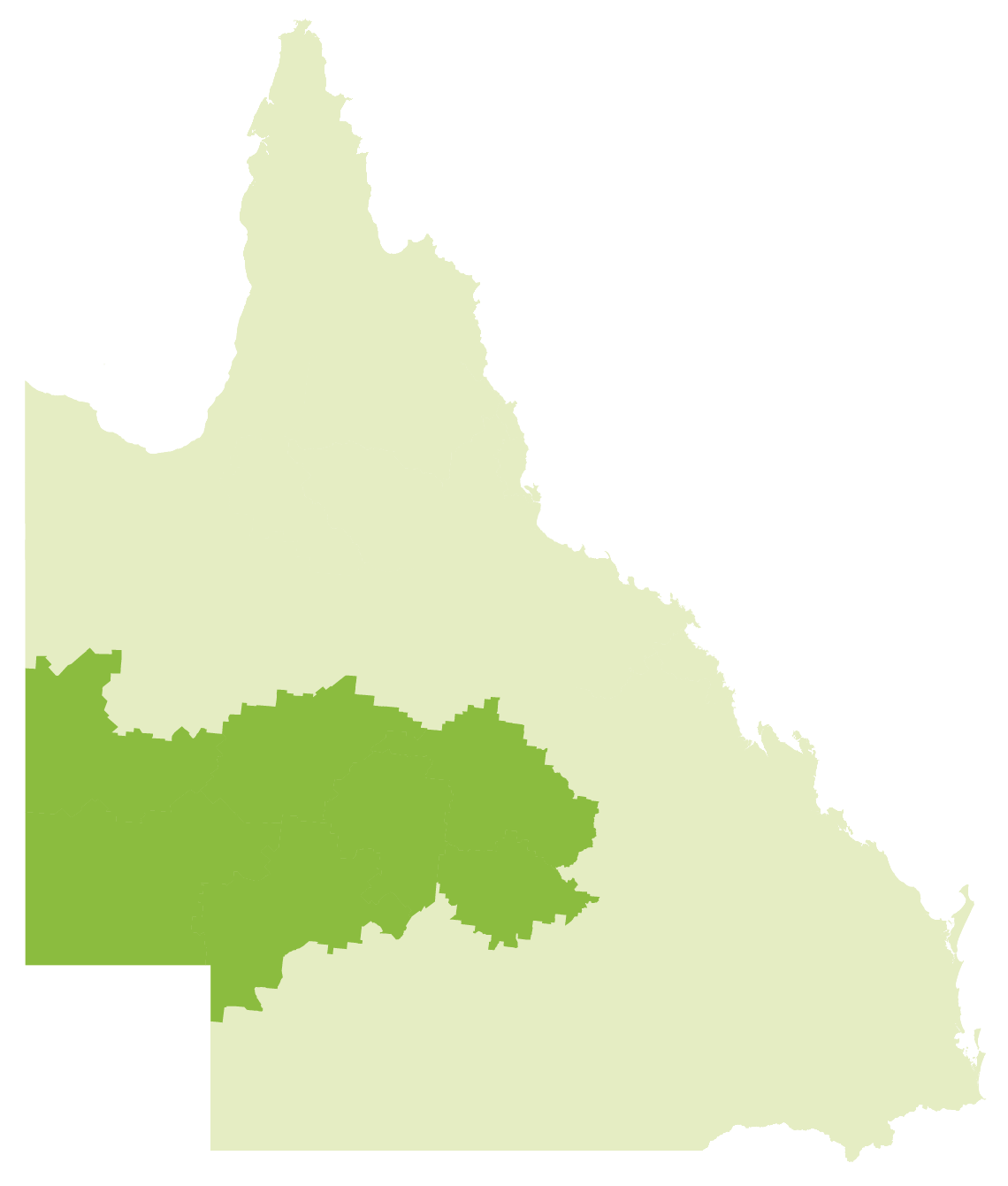
Overview of Central West
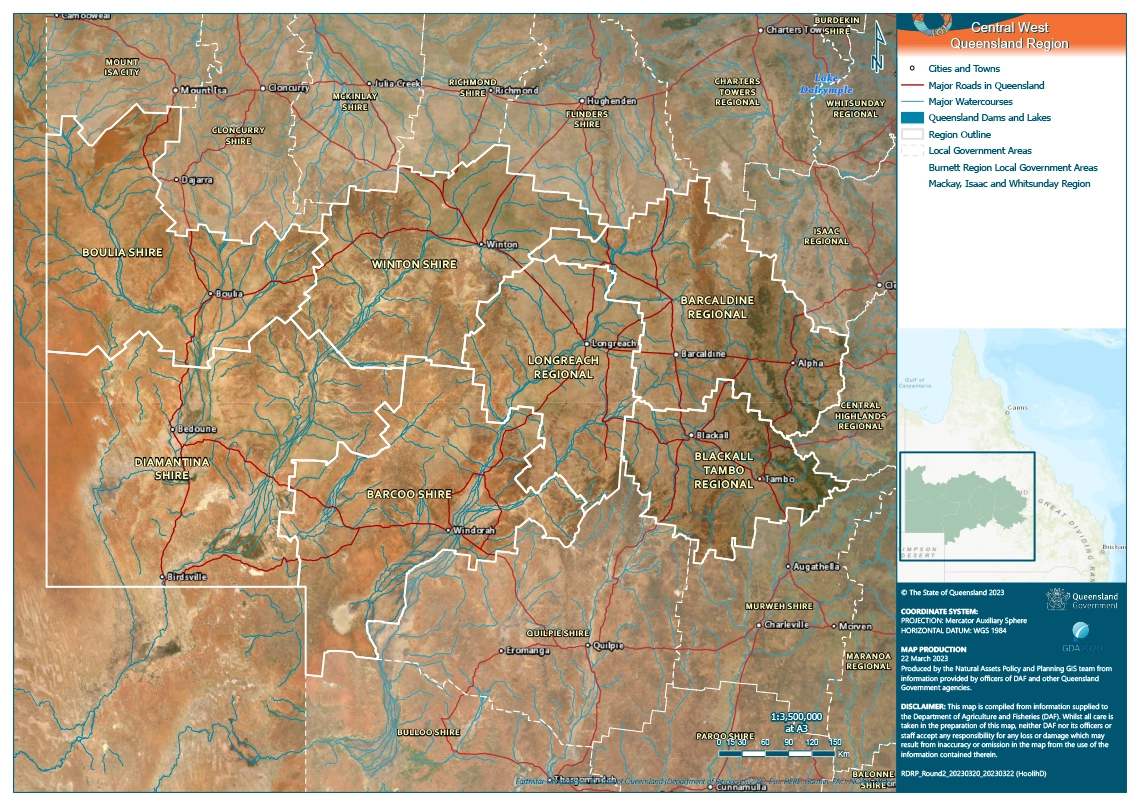
The Central West region is a rich tapestry of landscapes and ecosystems which supports diverse native flora and fauna.
The region is a unique and diverse area that extends over 396,609 square kilometres, accounting for 23% of Queensland’s land area. There are seven local governments within the Central West region: Barcaldine Regional Council, Barcoo Shire Council, Blackall-Tambo Regional Council, Boulia Shire Council, Diamantina Shire Council, Longreach Regional Council and Winton Shire Council. It is part of the Lake Eyre catchment and includes the Mitchell Downs, Channel Country and Desert Uplands biogeographic regions. Despite the small population and remoteness of the area, the region hosts several unique communities where the residents’ spirit, pride, sense of community and the innovativeness of small businesses combine to generate sustainable futures.
The region is the traditional country of several First Nations language groups – particularly the Kamilaroi, Pirriya, Mithika, Karuwalia, Iningai peoples. They and their ancestors have had a long connection to the land and water, anchored deeply in their cultural, spiritual and historical identity, with a deep knowledge of drought. Over time, land dispossessions, urban development, and loss of native flora and fauna have had unique impacts on First Nations peoples and affected both their cultural practices and decision-making power.
Past impacts of drought in this region
Past impacts | People, culture & community
EXTRACTS FROM THE FULL RDRP PLAN

During periods of drought, personal reflections indicate household financial stress (and the appearance of poor financial health for local businesses) may be a significant contributor to mental health issues and an overall lower general health.
Results from the Regional Wellbeing Survey paint a picture of a region where people are generally “happy with their lot” and have a strong sense of community, as well as faith in their community leadership and institutions. Declining populations (possibly stemming from drought outmigration) are very noticeable to those that are left, and quality of infrastructure is an area specifically nominated for improvement.
Evidence in recent years also clearly shows drought exacerbates chronic stresses and underlying issues such as legal and financial problems, medical and health problems, alcohol and substance abuse, isolation and social withdrawal, breakdown of relationships, and in the worse cases – instances of self-harm and suicide.
For First Nations peoples of the region, the impacts of drought magnifies many of the chronic and endemic issues they already face. This is particularly true for issues such as health, education, access to services and employment.
Past impacts | Economy
EXTRACTS FROM THE FULL RDRP PLAN

With more than 95% of the Central West region used for agriculture, much of the region remains particularly economically vulnerable to drought.
The economy of the region has been traditionally focused on agriculture – therefore, drought impacts farming and agricultural supply-chain businesses most significantly. In recent decades, farming practices have changed to deal with drought and climatic impacts, new agricultural ‘industries’ have emerged, and farm businesses and households have diversified their incomes.
However, the region still remains critically vulnerable to drought and a lack of water. Adaptive measures and changes in farming practices continue to mitigate some of the impacts during drought, and increase farm yields in ’non-drought’ periods.
There is some evidence of economic shifts in the region that may lead to increased regional resilience in the future. Tourism, for example, has increased in value approximately 7% per year despite the region being in drought.
Past impacts | Landscape and natural environment
EXTRACTS FROM THE FULL RDRP PLAN
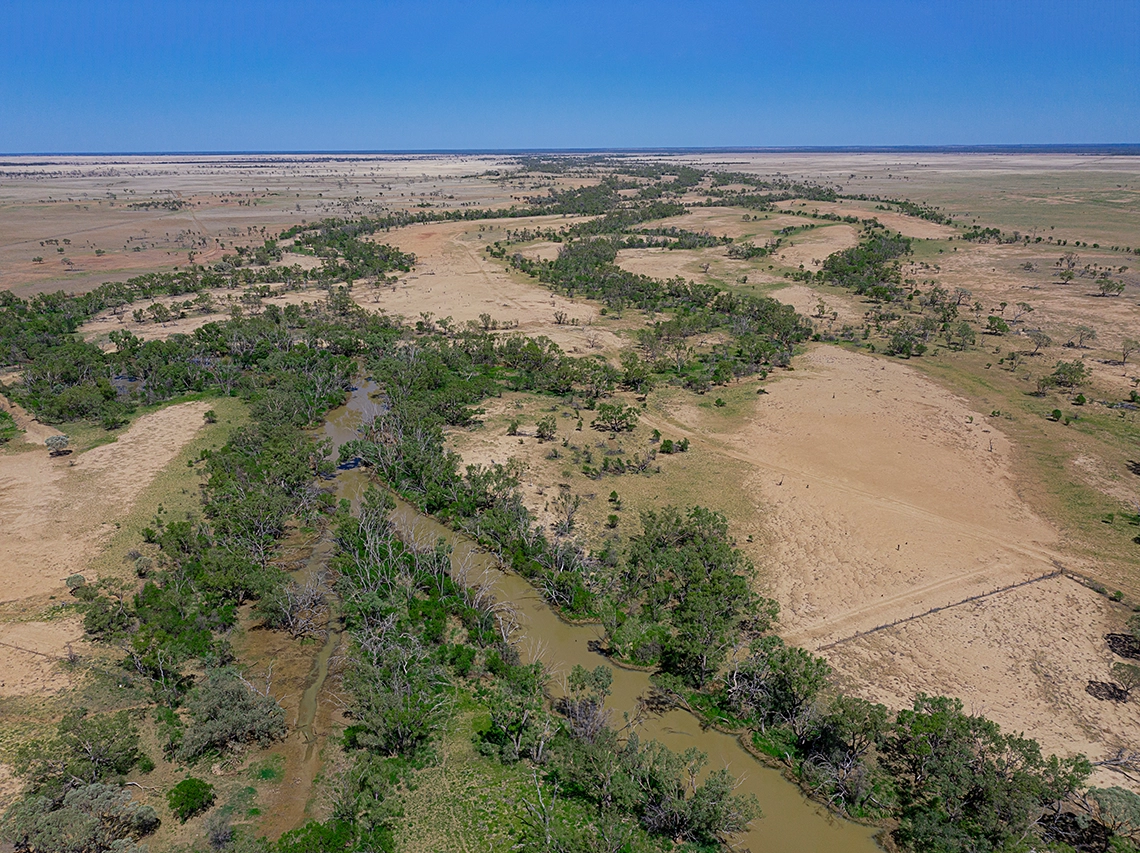
The river systems of the region are highly transient, where waterholes move through a cycle of being full and dry. The ecosystem has evolved around this wet and dry cycle.
There are permanent waterholes dotted along the rivers which provide an important habitat, as well stock water and supplementary water for some towns. The waterholes also have strong cultural importance to the Traditional Custodians of the region. Under the projected climate conditions, the persistence of these waterholes is projected to decrease with a medium level of confidence. Another major threat to waterhole persistence is sedimentation being mobilised from surrounding landscapes and ending up in waterholes. This is particularly occurring due to a lack of ground cover in drought-breaking rain events.
Invasive weed infestation of the region is a major production and environmental issue. Weeds have an ability to quickly establish in bare areas, particularly after drought periods.
Some long-term reductions in pasture growth may also indicate the effects of some longer term degradation of pastures and soils as a result of prolonged drought periods.
Past impacts | Infrastructure and built environment
EXTRACTS FROM THE FULL RDRP PLAN
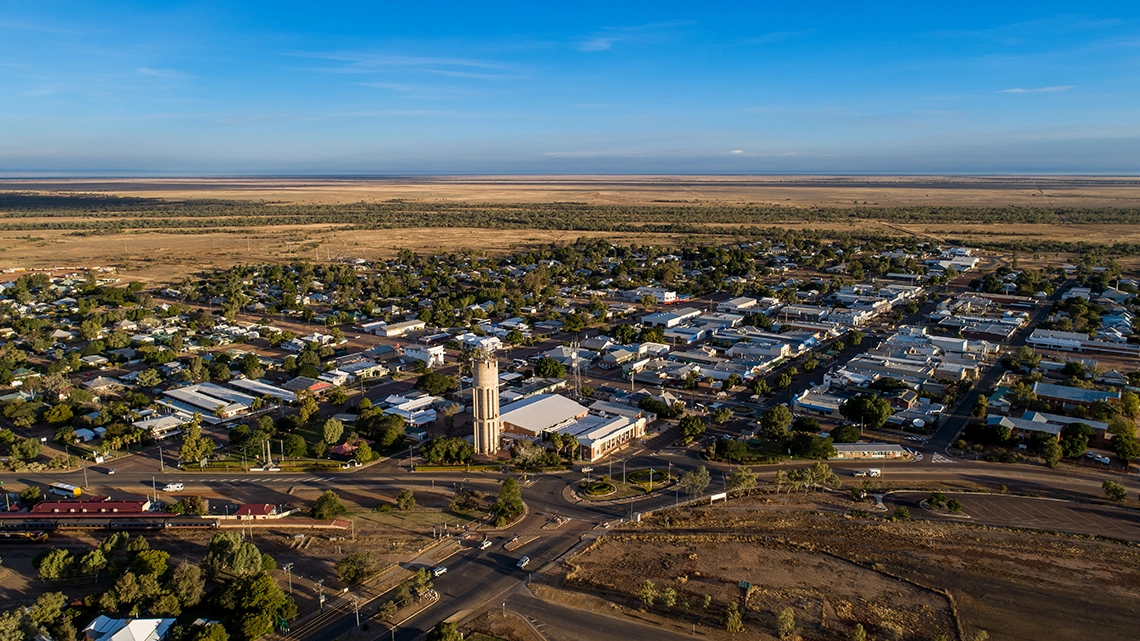
During drought periods, on-farm improvements or maintenance are often neglected, avoided or postponed and the upkeep of ‘in-town’ community infrastructure is sometimes neglected or abandoned.
For some categories of infrastructure, the harsh physical effects of drought (i.e. increased heat and little or no moisture), can have significant impact on their condition (i.e. road surfaces, wooden and metal structures, painted surfaces, earthen-based structures etc). However for most infrastructure, the most significant impacts of drought come from lack of funds for infrastructure investment and/or maintenance, and decrease in available (or able) personnel to carry out construction and/or maintenance. Drought frequently causes a reduction in investment (both public and private) in new infrastructure ‘in town’.
Drought may also result in increased use of some infrastructure such as roads and rail. This is particularly relevant to the Central West roads system.
However despite this, the single largest concern across the region is the poor digital infrastructure. This lack of infrastructure is constraining the ability for businesses to start and grow, for the region to economically diversify and increase its population. It is also constraining the ability for people in the region to access education, government services and healthcare. While drought has little or no direct impact on digital connectivity, this connectivity plays a vital role in reducing some of the impacts of drought.
Likely future impacts of drought in this region
Future impacts | People, culture & community
EXTRACTS FROM THE FULL RDRP PLAN
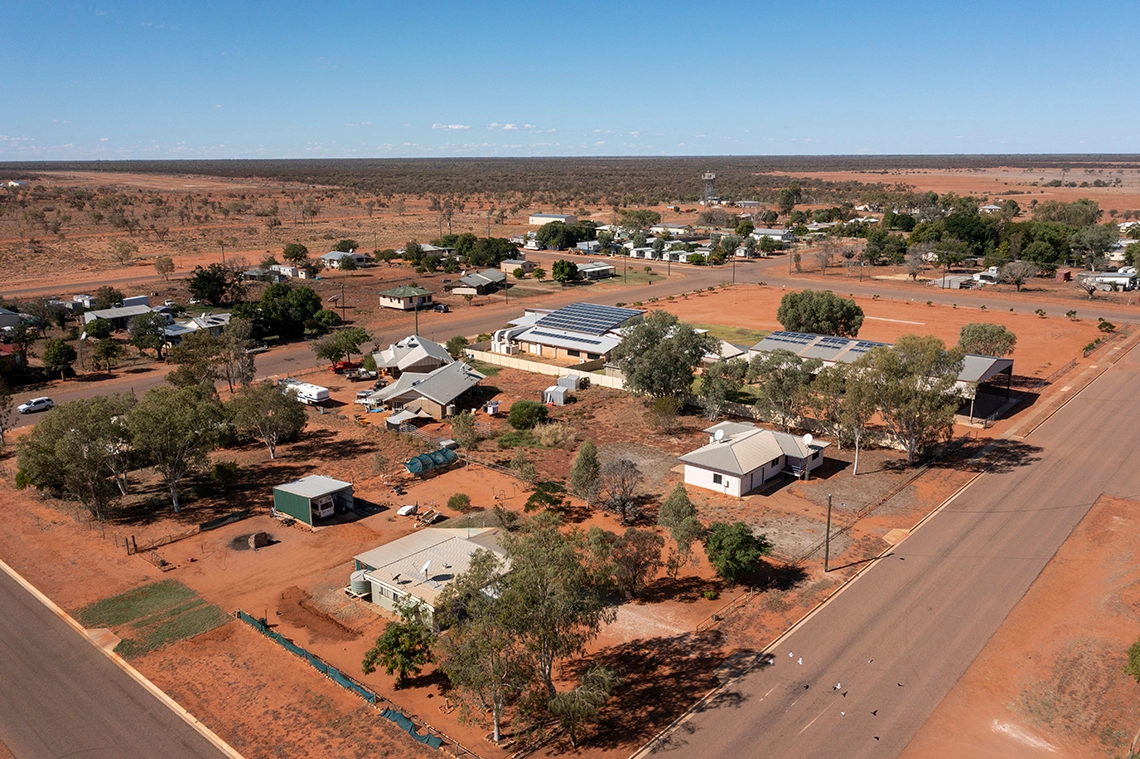
Likely effects of future drought on communities in the Central West region may include:
- population decline
- young people leaving the region
- exacerbated local issues
- mental health issues and suicide
- loss of expertise and experience in both landscape care and business knowledge
- loss of volunteers and participants at community events
- inefficient use of time, money and goodwill at a local level of governance
- no ‘whole of governments’ approach to investment and delivery.
Future impacts | Economy
EXTRACTS FROM THE FULL RDRP PLAN

Likely effects of future drought on the economy in the Central West region may include:
- reduced availability/diversity of local employment
- decreased investment in the region
- diminished borrowing capacity
- loss of sequestered carbon stock
- increased insurance premiums
- reduced stock conditions and stock losses.
Future impacts | Landscape and natural environment
EXTRACTS FROM THE FULL RDRP PLAN
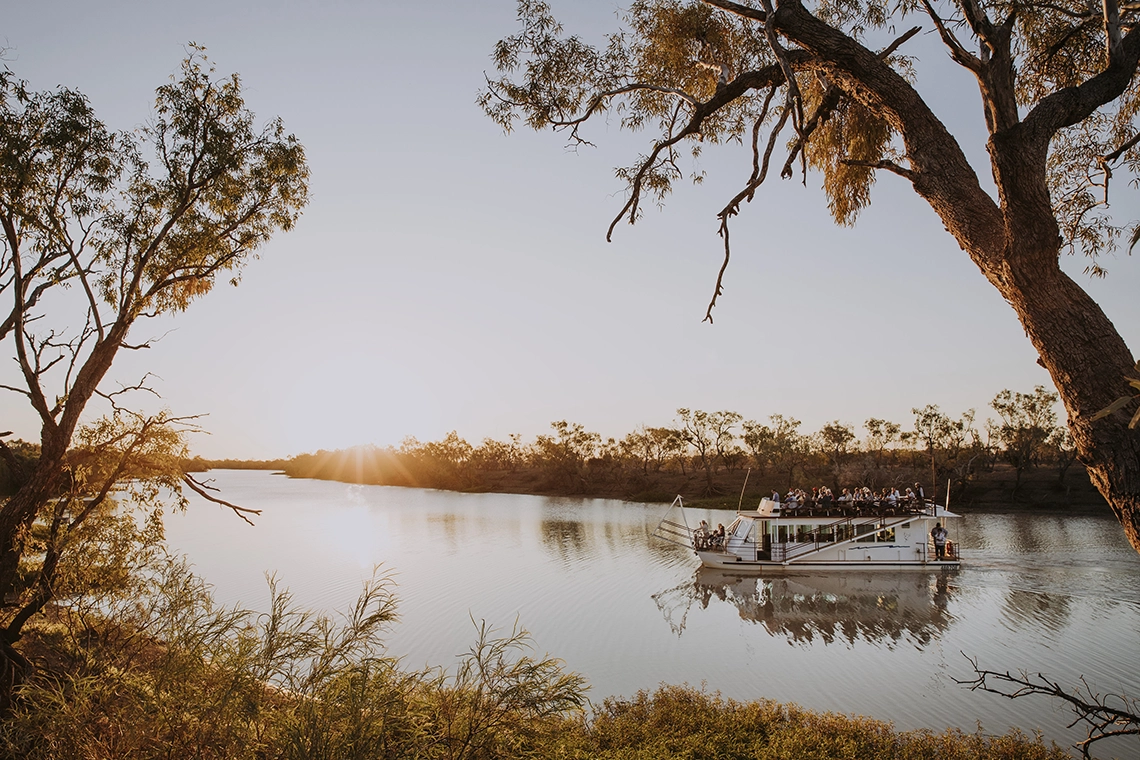
Likely effects of future drought on the landscape and natural environment in the Central West region may include:
- reduced pasture condition
- pasture composition change with reduction in the preferred perennial grasses
- drying trend
- heavy rain ending drought leading to damage and loss of soil
- increased risk of bushfires
- loss of key links or species
- increase of in-stream habitat sedimentation
- increased invasive pest species’ extent
- reduced adaptive capacity of species
- reduced condition or loss of ground cover
- reduced condition or loss of wetland/floodplain/riparian areas of vegetation and subsequent increased vulnerability to flood
- decline in condition of stock routes due to increased use.
Future impacts | Infrastructure and built environment
EXTRACTS FROM THE FULL RDRP PLAN
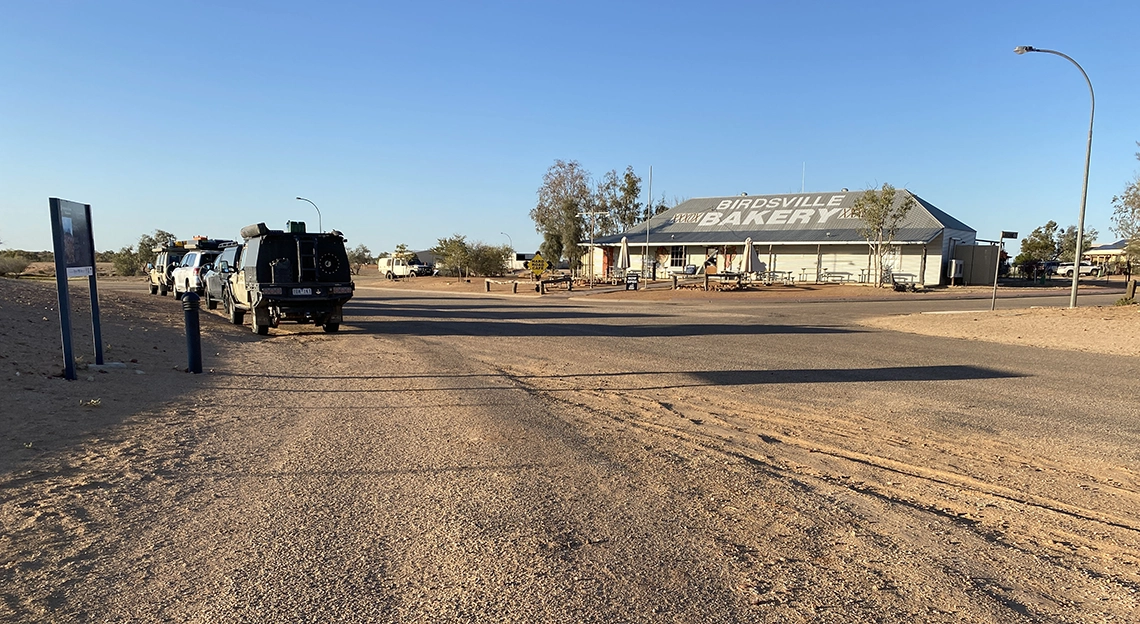
Likely effects of future drought on the infrastructure and built environment in the Central West region may include:
- increased load on ICT services and data
- increased demand on water infrastructure
- rising costs and use of energy
- reduced capacity to maintain fences.
Regional strategy
Regional strategy | People, culture & community
EXTRACTS FROM THE FULL RDRP PLAN
Planning and monitoring
Projected outcome: Communities use a resilience framework to monitor the level of resilience readiness of organisations, groups and individuals. Results are used to design systemic processes in each community to maintain – and where needed – develop resilience levels.
Respond to drought events
Projected outcome: Central West Queensland communities with ready access to the information they need to respond to drought situations.
Build future resilience
Projected outcome: Enable people and communities to gain the skills to increase resilience to drought and other adverse events.
Regional strategy | Economy
EXTRACTS FROM THE FULL RDRP PLAN
Planning and monitoring
Projected outcome: The regional economy is better prepared for dry times and drought through planning to provide jobs and retain a regional workforce which will sustain communities.
Respond to drought events
Projected outcome: Increased capacity to provide services, regional coordination, and support diversification and innovation to maintain the regional economy.
Build future resilience
Projected outcome: Support activities known to promote future resilience.
Regional strategy | Landscape and natural environment
EXTRACTS FROM THE FULL RDRP PLAN
Planning and monitoring
Projected outcome: Land managers are prepared and able to assess and understand what is required for resilience of landscapes and the natural environment.
Respond to drought events
Projected outcome: Enable land managers and communities to access and use information for making decisions.
Build future resilience
Projected outcome: Landscapes and land managers are better prepared for dry times and have the skills to manage in dry times.
Regional strategy | Infrastructure and built environment
EXTRACTS FROM THE FULL RDRP PLAN
Planning and monitoring
Projected outcome: A regional drought surveillance program in place monitoring and analysing key indicators of current and emerging environmental (meteorological and landscape), social, and economic conditions – which are markers of drought.
Respond to drought events
Projected outcome: Landholders and communities have capacity to respond to drought events through accessing grants and being aware of drought vulnerability indicators for the region.
Build future resilience
Projected outcome: Essential infrastructure is in place and maintained so communities and industries can access in dry times and drought.